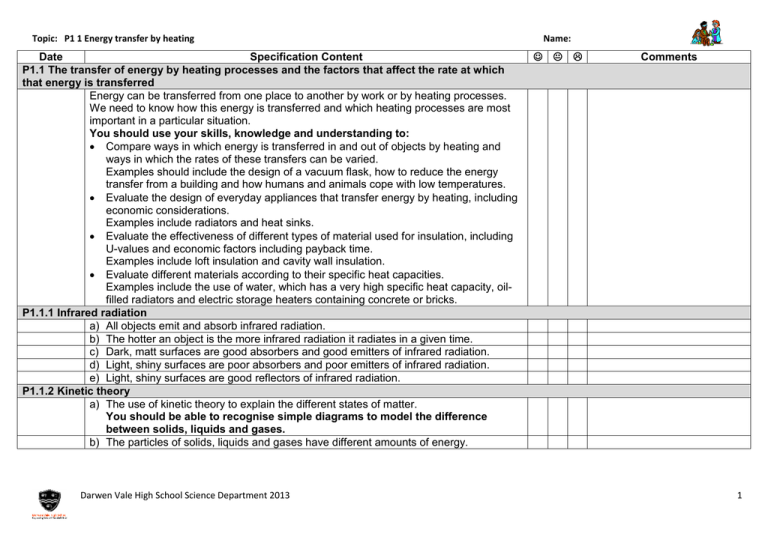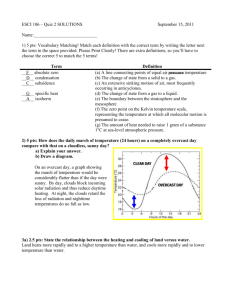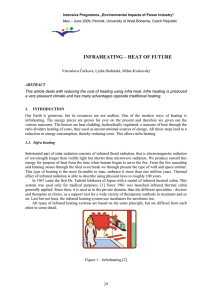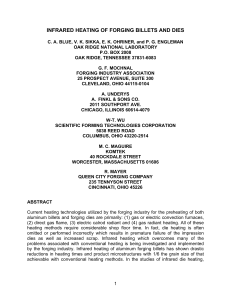P1.1 Energy transfer by heating
advertisement

Topic: P1 1 Energy transfer by heating Date Specification Content P1.1 The transfer of energy by heating processes and the factors that affect the rate at which that energy is transferred Energy can be transferred from one place to another by work or by heating processes. We need to know how this energy is transferred and which heating processes are most important in a particular situation. You should use your skills, knowledge and understanding to: Compare ways in which energy is transferred in and out of objects by heating and ways in which the rates of these transfers can be varied. Examples should include the design of a vacuum flask, how to reduce the energy transfer from a building and how humans and animals cope with low temperatures. Evaluate the design of everyday appliances that transfer energy by heating, including economic considerations. Examples include radiators and heat sinks. Evaluate the effectiveness of different types of material used for insulation, including U-values and economic factors including payback time. Examples include loft insulation and cavity wall insulation. Evaluate different materials according to their specific heat capacities. Examples include the use of water, which has a very high specific heat capacity, oilfilled radiators and electric storage heaters containing concrete or bricks. P1.1.1 Infrared radiation a) All objects emit and absorb infrared radiation. b) The hotter an object is the more infrared radiation it radiates in a given time. c) Dark, matt surfaces are good absorbers and good emitters of infrared radiation. d) Light, shiny surfaces are poor absorbers and poor emitters of infrared radiation. e) Light, shiny surfaces are good reflectors of infrared radiation. P1.1.2 Kinetic theory a) The use of kinetic theory to explain the different states of matter. You should be able to recognise simple diagrams to model the difference between solids, liquids and gases. b) The particles of solids, liquids and gases have different amounts of energy. Darwen Vale High School Science Department 2013 Name: Comments 1 Topic: P1 1 Energy transfer by heating Date Specification Content P1.1.3 Energy transfer by heating a) The transfer of energy by conduction, convection, evaporation and condensation involves particles, and how this transfer takes place. You should understand in simple terms how the arrangement and movement of particles determine whether a material is a conductor or an insulator. You should understand the role of free electrons in conduction through a metal. You should be able to use the idea of particles moving apart to make a fluid less dense, to explain simple applications of convection. b) The factors that affect the rate of evaporation and condensation. You should be able to explain evaporation and the cooling effect this causes using the kinetic theory. You should be able to explain the design of devices in terms of energy transfer, for example, cooling fins. c) The rate at which an object transfers energy by heating depends on: Surface area and volume. The material from which the object is made. The nature of the surface with which the object is in contact. You should be able to explain animal adaptations in terms of energy transfer, for example, relative ear size of animals in cold and warm climates. d) The bigger the temperature difference between an object and its surroundings, the faster the rate at which energy is transferred by heating. P1.1.4 Heating and insulating buildings a) U-values measure how effective a material is as an insulator. b) The lower the U-value, the better the material is as an insulator. c) Solar panels may contain water that is heated by radiation from the Sun. This water may then be used to heat buildings or provide domestic hot water. d) The specific heat capacity of a substance is the amount of energy required to change the temperature of one kilogram of the substance by one degree Celsius. E=mxcx E is energy transferred in joules, J m is mass in kilograms, kg is temperature change in degrees Celsius, oC c is specific heat capacity in J / kg °C Darwen Vale High School Science Department 2013 Name: Comments 2









